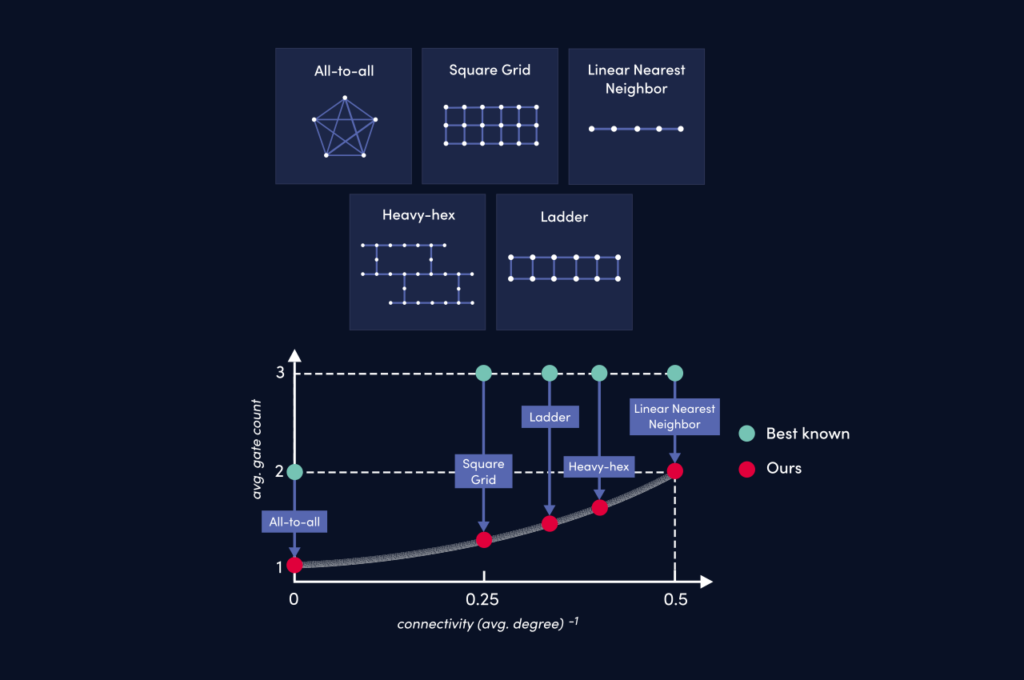ParityQC, in collaboration with the University of Innsbruck, has unveiled Parity Twine, a groundbreaking method for synthesizing quantum algorithms that sets new records in optimizing gate count and circuit depth. This innovation outperforms existing state-of-the-art approaches across a wide range of quantum hardware architectures, including linear chains, square grids, hexagonal lattices, and all-to-all connected systems. The method, detailed in the paper “Connectivity-aware Synthesis of Quantum Algorithms”, addresses the challenge of implementing quantum algorithms on hardware with limited qubit connectivity, a major bottleneck in quantum computing.
Parity Twine builds on the ParityQC Architecture, leveraging parity label tracking and connectivity-adapted CNOT-based building blocks called Parity Twine chains. These chains efficiently distribute quantum information and introduce entanglement, significantly reducing the need for costly operations like SWAP gates. The method is demonstrated to be highly effective for implementing key quantum algorithms, such as the Quantum Fourier Transform (QFT) and the Quantum Approximate Optimization Algorithm (QAOA), achieving optimal gate counts and circuit depths across various hardware platforms.
The authors, including ParityQC co-CEO Wolfgang Lechner, emphasize that Parity Twine represents a leap in co-designing quantum hardware and software, enabling record-breaking performance. The approach provides a generic framework for connectivity-aware algorithm design, ensuring efficient implementations even on sparsely connected systems.
For more information, visit the ParityQC’s press release here and the pre-print of the paper is available for peer review here.
February 1, 2025


